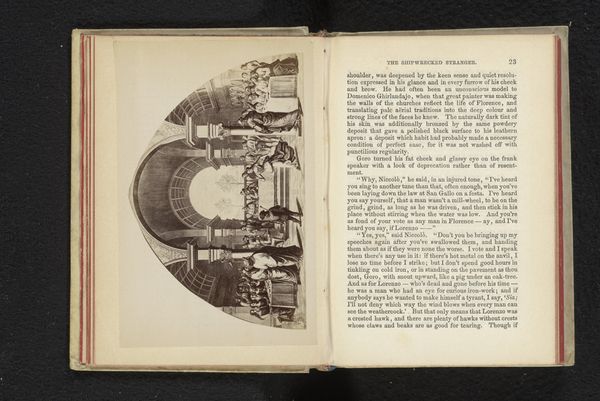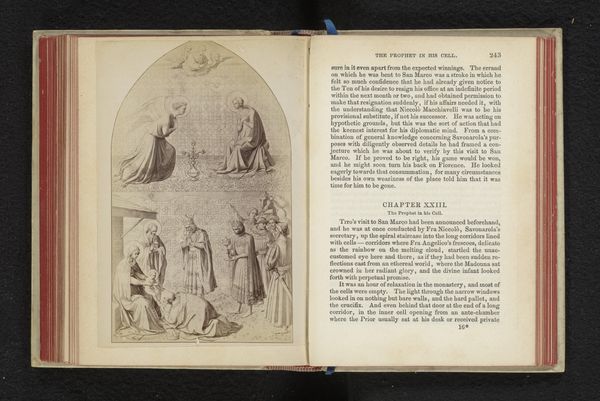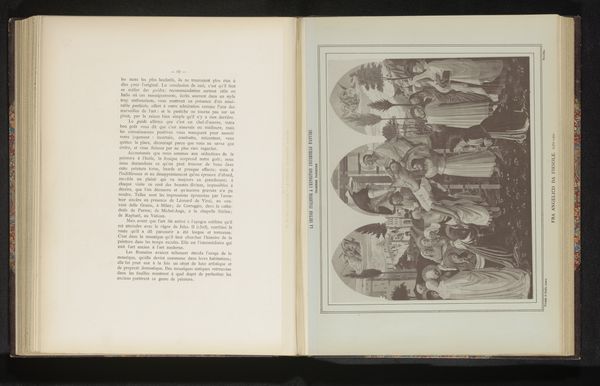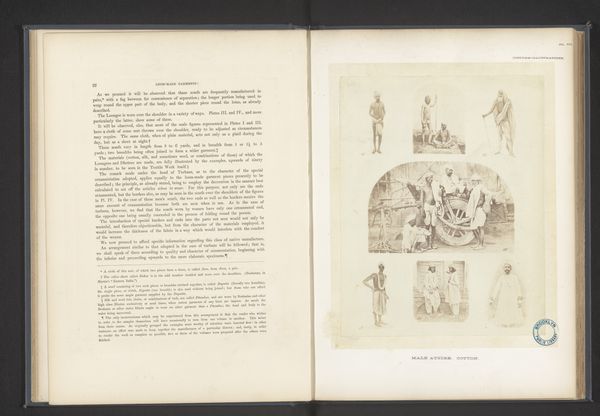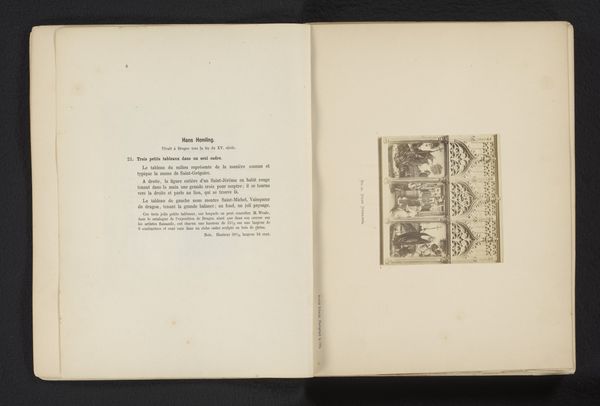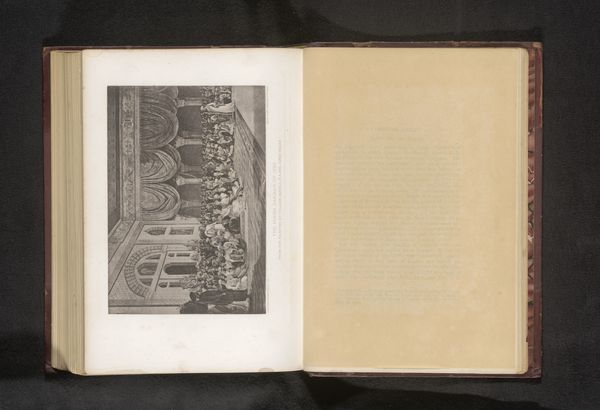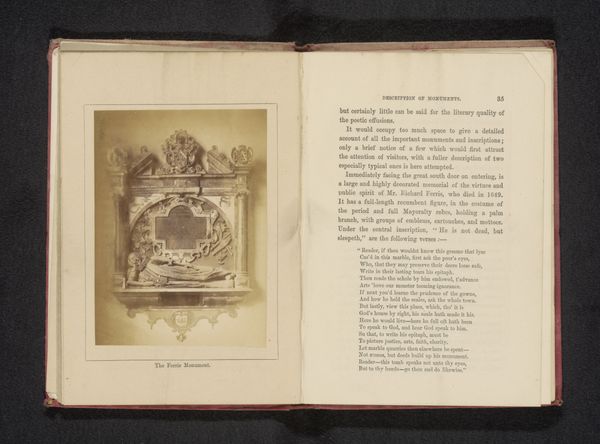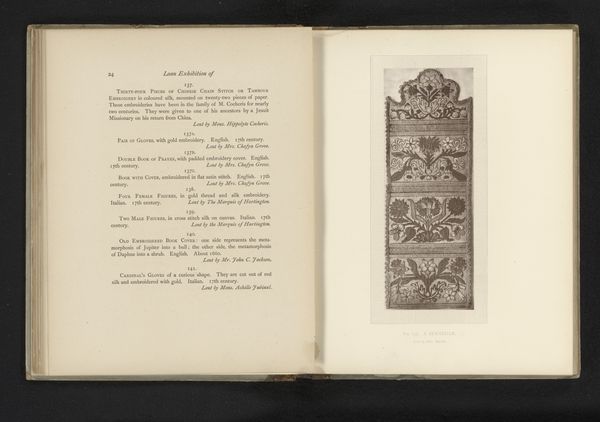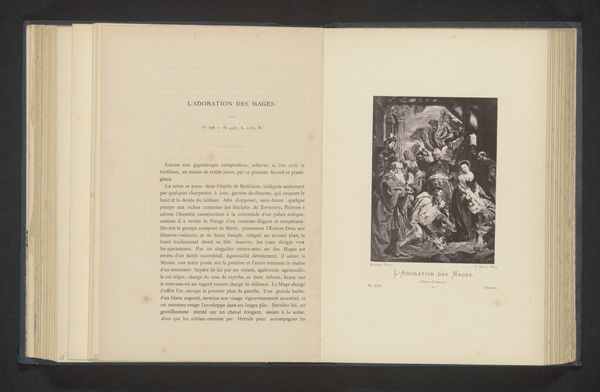
Fotoreproductie van een fresco van de Kruisiging door Beato Angelico in de San Marco, Florence before 1863
0:00
0:00
print, fresco, photography, gelatin-silver-print
#
narrative-art
# print
#
fresco
#
photography
#
gelatin-silver-print
#
history-painting
#
italian-renaissance
Dimensions: height 89 mm, width 143 mm
Copyright: Rijks Museum: Open Domain
Curator: This gelatin-silver print presents a reproduction of a fresco by the Early Renaissance master, Fra Angelico. It’s titled "Fotoreproductie van een fresco van de Kruisiging door Beato Angelico in de San Marco, Florence", and was made sometime before 1863 by Giacomo Brogi. Editor: My immediate response is one of coolness. The limited grayscale palette lends an air of historical distance and somber contemplation that feels remarkably stark, like an x-ray of a bygone devotional practice. Curator: Indeed. The photographic process itself brings the early Renaissance into dialogue with mid-19th century technology. Looking at the construction of this print, we see a new system for wider consumption of iconic imagery using new materials to make the circulation much easier. It allows us to consider art accessibility. Here a spiritual image shifts from unique artwork to commodity for an expanding market. Editor: It's a fascinating interplay. The original fresco, conceived within the walls of a Florentine monastery, was itself designed to facilitate contemplation within that sacred space. Its photographic reproduction, however, effectively democratizes it, severing its ties to the architectural setting and the act of ritualized devotion, presenting it as an object of consumption within a book. Curator: Absolutely, the material properties are key to the function. We move from pigment on plastered walls designed to fix us, the monks, within an ascetic order to mass produced prints available in shops. The narrative scene, the crucifixion itself, normally the pinnacle of suffering and sacrifice, in this state prompts us to meditate on access and circulation rather than, necessarily, religious beliefs. It challenges the conventional high/low art divide. The means of photographic production affect the reception of devotional images, inviting modern viewership into early Renaissance spirituality and making us reconsider what “art” actually is, outside hallowed settings. Editor: This copy’s context makes you ponder who consumed such reproductions, what other images might they have been packaged with, and how Brogi and others influenced art dissemination—it moves the center from the original artist, Fra Angelico. I come away thinking about the act of artistic consumption itself as a kind of cultural and, in its own way, devotional practice. Curator: For me it underlines the complex relationships between spiritual practice and modes of production and, critically, it forces us to face who had and did not have access to images then, and who has access now.
Comments
No comments
Be the first to comment and join the conversation on the ultimate creative platform.

